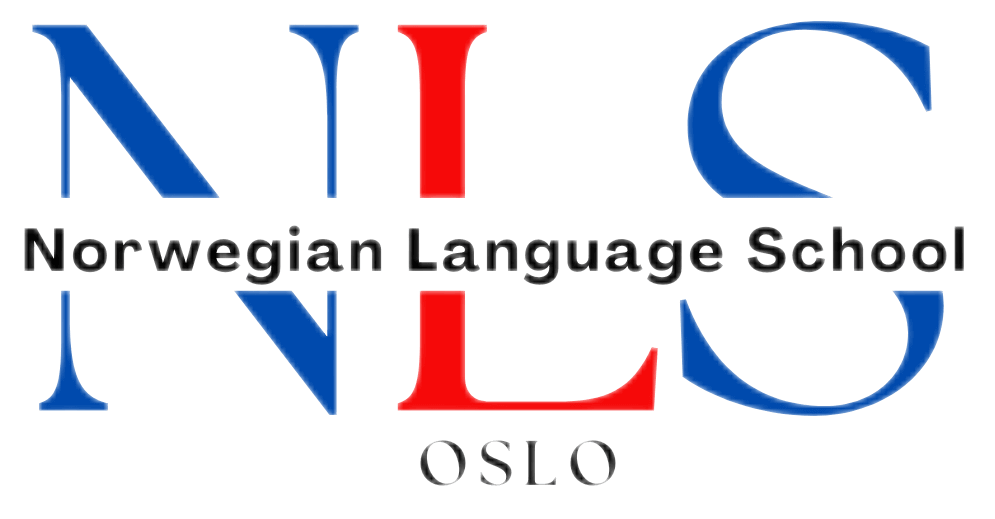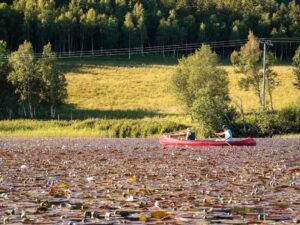

The Essentials: 5 Norwegian Auxiliary Verbs You Should Know
Auxiliary verbs are an essential part of Norwegian grammar. They are used to modify the meaning of the main verb in a sentence and play a crucial role in expressing tense, mood, and aspect. Without auxiliary verbs, it would be challenging to convey the nuances of time and action in Norwegian. Understanding and mastering auxiliary verbs is therefore crucial for anyone learning the Norwegian language.
Table of Contents
ToggleKey Takeaways
- Norwegian auxiliary verbs are important for understanding the language’s grammar structure.
- Auxiliary verbs in Norwegian are used to form tenses, questions, and negative sentences.
- The five most important Norwegian auxiliary verbs are “å være,” “å ha,” “å skulle,” “å ville,” and “å kunne.”
- Present tense conjugation of Norwegian auxiliary verbs involves adding an “r” to the end of the verb stem.
- Past tense conjugation of Norwegian auxiliary verbs involves adding “-te” or “-de” to the end of the verb stem.
- To form questions in Norwegian, the auxiliary verb is placed before the subject.
- To form negative sentences in Norwegian, “ikke” is placed after the auxiliary verb.
- Common phrases and expressions using Norwegian auxiliary verbs include “Jeg skal dra” (I am going to leave) and “Jeg kan ikke svømme” (I cannot swim).
- Tips for mastering Norwegian auxiliary verbs include practicing regularly and paying attention to context.
- Practice exercises to improve your use of Norwegian auxiliary verbs include writing sentences using different tenses and forming questions and negative sentences.
Understanding the role of auxiliary verbs in Norwegian grammar
In Norwegian, auxiliary verbs modify the meaning of the main verb in a sentence. They can indicate tense, mood, aspect, and other grammatical features. For example, the auxiliary verb “har” (to have) is used to form the perfect tense in Norwegian. In the sentence “Jeg har spist middag” (I have eaten dinner), “har” modifies the main verb “spist” (eaten) to indicate that the action of eating dinner has been completed in the past.
Other examples of auxiliary verbs in Norwegian include “er” (to be), “skal” (shall/will), “vil” (want/will), and “må” (must/have to). These auxiliary verbs are used to express various aspects of time, obligation, intention, and desire. By understanding how these auxiliary verbs function in sentences, learners can effectively communicate their thoughts and actions in Norwegian.
The five most important Norwegian auxiliary verbs to know
1. Ha (to have): The auxiliary verb “ha” is used to form the perfect tense in Norwegian. It indicates that an action has been completed in the past. For example, “Jeg har spist frokost” (I have eaten breakfast).
2. Være (to be): The auxiliary verb “være” is used to indicate a state of being or existence. It is also used to form passive constructions in Norwegian. For example, “Jeg er glad” (I am happy) and “Boken blir lest av meg” (The book is being read by me).
3. Skal (shall/will): The auxiliary verb “skal” is used to express future actions or intentions. It can also indicate obligation or necessity. For example, “Jeg skal reise til Oslo i morgen” (I will travel to Oslo tomorrow) and “Du skal gjøre leksene dine” (You must do your homework).
4. Vil (want/will): The auxiliary verb “vil” is used to express desires, wishes, or intentions. It can also indicate future actions. For example, “Jeg vil spise pizza i kveld” (I want to eat pizza tonight) and “Vi vil dra på ferie neste uke” (We will go on vacation next week).
5. Må (must/have to): The auxiliary verb “må” is used to express obligation or necessity. It indicates that something is required or mandatory. For example, “Jeg må studere til eksamen” (I must study for the exam) and “Vi må vaske opp etter middagen” (We have to wash the dishes after dinner).
Present tense conjugation of Norwegian auxiliary verbs
In the present tense, the conjugation of Norwegian auxiliary verbs is as follows:
– Ha: jeg har, du har, han/hun har, vi har, dere har, de har
– Være: jeg er, du er, han/hun er, vi er, dere er, de er
– Skal: jeg skal, du skal, han/hun skal, vi skal, dere skal, de skal
– Vil: jeg vil, du vil, han/hun vil, vi vil, dere vil, de vil
– Må: jeg må, du må, han/hun må, vi må, dere må, de må
Examples of present tense sentences using auxiliary verbs:
– Jeg har en hund. (I have a dog.)
– Du er flink til å synge. (You are good at singing.)
– Han skal på kino i kveld. (He is going to the movies tonight.)
– Vi vil besøke familien vår i helgen. (We want to visit our family this weekend.)
– Dere må levere inn oppgaven i morgen. (You have to submit the assignment tomorrow.)
Past tense conjugation of Norwegian auxiliary verbs
In the past tense, the conjugation of Norwegian auxiliary verbs is as follows:
– Ha: jeg hadde, du hadde, han/hun hadde, vi hadde, dere hadde, de hadde
– Være: jeg var, du var, han/hun var, vi var, dere var, de var
– Skal: jeg skulle, du skulle, han/hun skulle, vi skulle, dere skulle, de skulle
– Vil: jeg ville, du ville, han/hun ville, vi ville, dere ville, de ville
– Må: jeg måtte, du måtte, han/hun måtte, vi måtte, dere måtte, de måtte
Examples of past tense sentences using auxiliary verbs:
– Jeg hadde en fin ferie. (I had a nice vacation.)
– Du var syk forrige uke. (You were sick last week.)
– Han skulle møte meg på kafeen, men han kom ikke. (He was supposed to meet me at the cafe, but he didn’t come.)
– Vi ville dra på fjelltur i går, men det regnet. (We wanted to go hiking yesterday, but it was raining.)
– Dere måtte vente lenge på bussen. (You had to wait a long time for the bus.)
Using auxiliary verbs to form questions in Norwegian

To form yes/no questions in Norwegian, the auxiliary verb is placed before the subject. For example:
– Har du spist middag? (Have you eaten dinner?)
– Er du klar? (Are you ready?)
– Skal han komme i morgen? (Is he coming tomorrow?)
– Vil dere være med på festen? (Do you want to come to the party?)
– Må de dra tidlig i morgen? (Do they have to leave early tomorrow?)
To form information questions in Norwegian, the auxiliary verb is placed before the subject and followed by the main verb. For example:
– Hva har du spist til frokost? (What have you eaten for breakfast?)
– Hvor er boken din? (Where is your book?)
– Når skal vi møtes? (When are we meeting?)
– Hvem vil være med på turen? (Who wants to come on the trip?)
– Hvorfor må de dra så tidlig? (Why do they have to leave so early?)
Using auxiliary verbs to form negative sentences in Norwegian
To form negative sentences in Norwegian, the word “ikke” is placed after the auxiliary verb. For example:
– Jeg har ikke tid nå. (I don’t have time now.)
– Du er ikke hjemme. (You are not at home.)
– Han skal ikke komme i dag. (He is not coming today.)
– Vi vil ikke gå på kino i kveld. (We don’t want to go to the movies tonight.)
– Dere må ikke glemme å betale regningen. (You must not forget to pay the bill.)
Common phrases and expressions using Norwegian auxiliary verbs
There are many common phrases and expressions in Norwegian that use auxiliary verbs. Here are a few examples:
– Ha det bra! (Goodbye! Literally: Have it good!)
– Vær så snill. (Please. Literally: Be so kind.)
– Skal vi danse? (Shall we dance?)
– Jeg vil gjerne ha en kopp kaffe. (I would like a cup of coffee.)
– Må jeg gjøre leksene mine nå? (Do I have to do my homework now?)
Tips for mastering Norwegian auxiliary verbs
To master Norwegian auxiliary verbs, it is important to practice regularly and focus on one auxiliary verb at a time. Start by learning the conjugation and usage of one auxiliary verb before moving on to the next. Use resources such as textbooks, language apps, and online exercises to reinforce your understanding and practice using auxiliary verbs in different contexts.
Practice exercises to improve your use of Norwegian auxiliary verbs
To improve your use of Norwegian auxiliary verbs, try the following practice exercises:
1. Fill-in-the-blank exercises: Complete sentences by filling in the correct form of the auxiliary verb.
Example: Jeg _____ spist middag. (ha)
2. Sentence completion exercises: Complete sentences by adding the appropriate auxiliary verb.
Example: _____ du tid i morgen? (ha)
3. Conversation practice exercises: Have conversations with a language partner or tutor, using auxiliary verbs in different tenses and contexts.
Example: A: Hva har du gjort i dag? (What have you done today?)
B: Jeg har vært på jobb og skal snart dra på trening. (I have been at work and will soon go to the gym.)
Auxiliary verbs are an essential part of Norwegian grammar, allowing us to express tense, mood, aspect, and other grammatical features. By understanding and mastering the use of auxiliary verbs, learners can effectively communicate their thoughts and actions in Norwegian. Practice regularly, focus on one auxiliary verb at a time, and use resources such as textbooks and language apps to improve your understanding and usage of Norwegian auxiliary verbs. With dedication and practice, you can become proficient in using auxiliary verbs in Norwegian.
If you’re interested in expanding your Norwegian vocabulary beyond grammar, you might enjoy this article on animal talk. It’s a fun way to learn Norwegian vocabulary for animal lovers. Check it out here.
If you want to learn Norwegian, you can register for classes here. We look forward to hearing from you and helping you become fluent in Norwegian.





